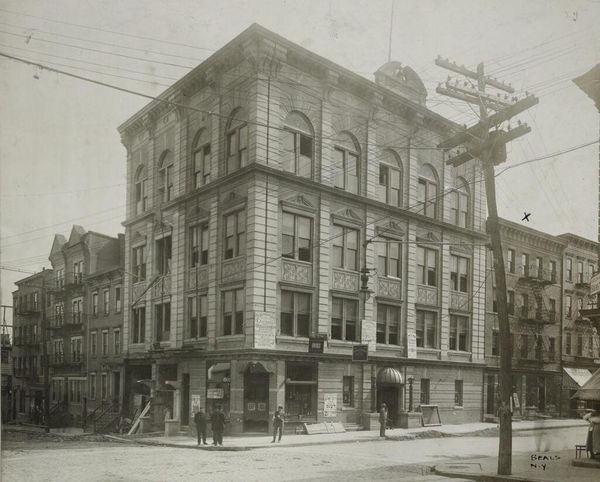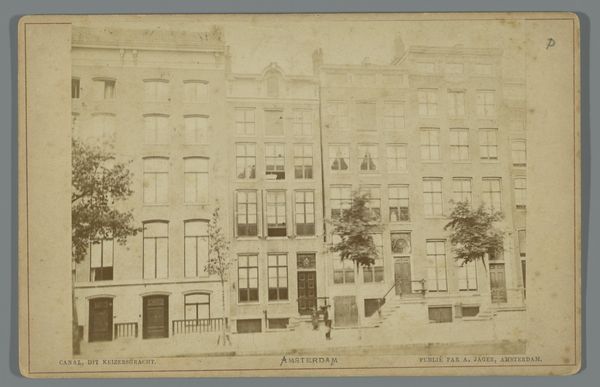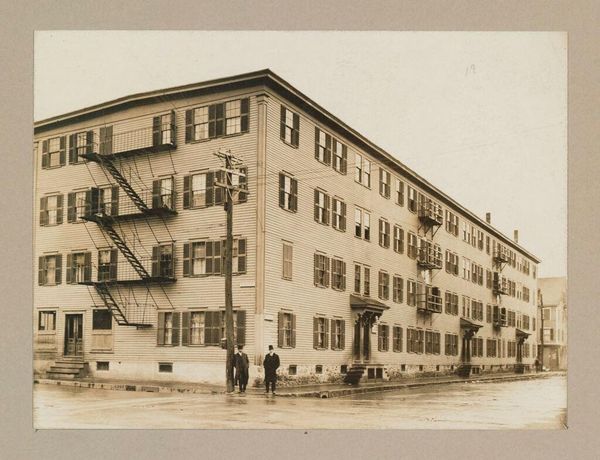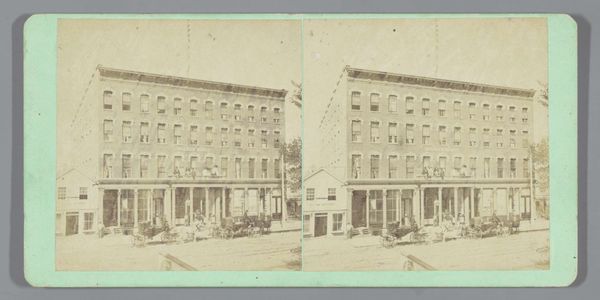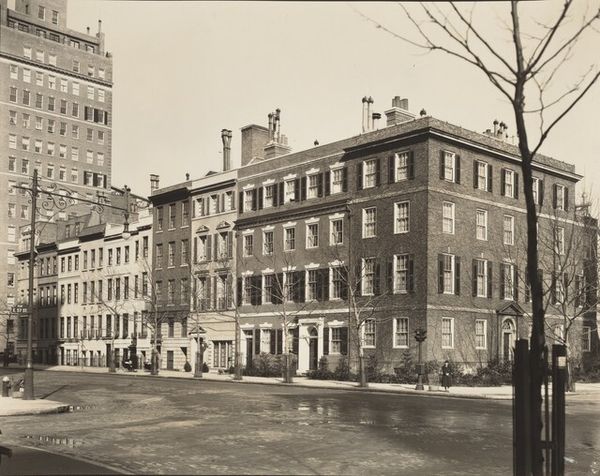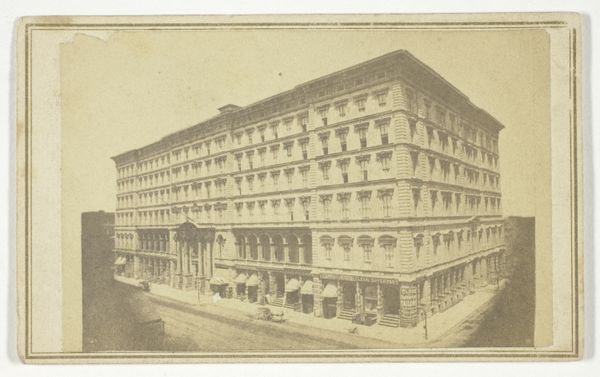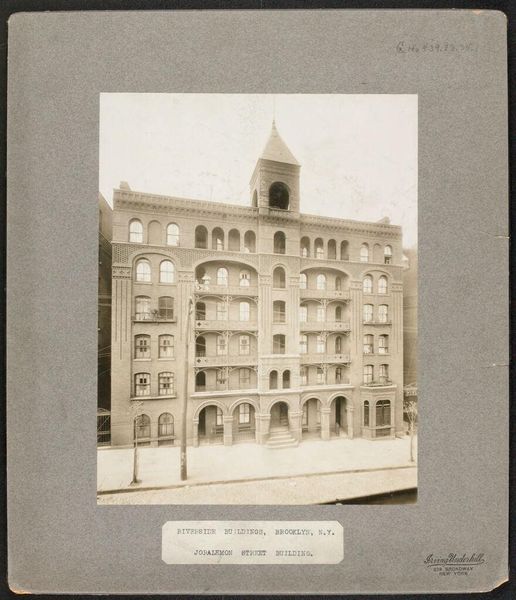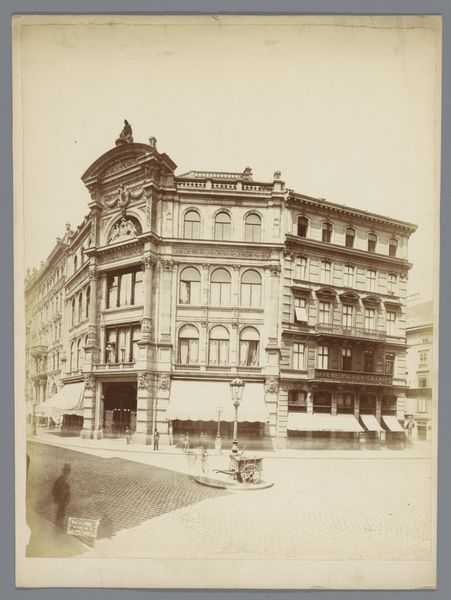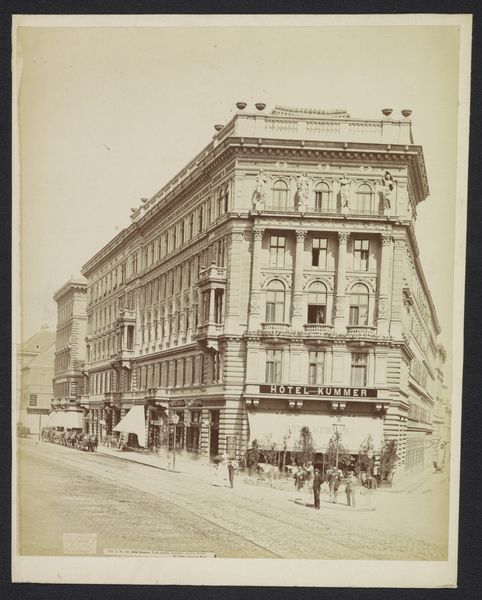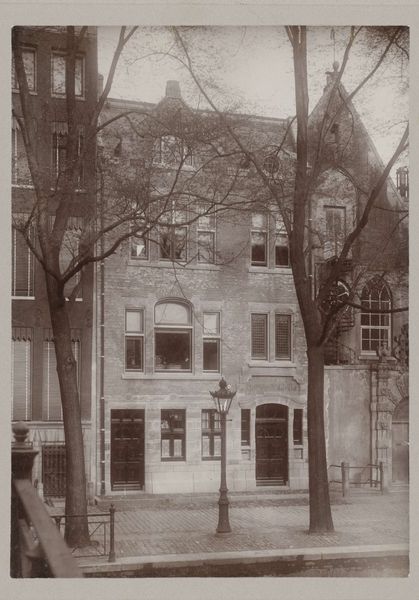
Housing, Improved: United States. New York. New York City. "Mills Hotel" Nos. 1 and 2 (E. Flagg, Architect): Improved Housing: New York City: Mills House No. 1 Improved Lodging House for Men. c. 1903
Dimensions: image: 18.5 x 15.2 cm (7 5/16 x 6 in.)
Copyright: CC0 1.0
Editor: This photograph captures the Mills Hotel, an improved lodging house for men in New York City. The building looks so imposing, yet the purpose was social reform. What can you tell me about the role of this building in its historical context? Curator: The Mills Hotel represents a fascinating intersection of philanthropy and social control. How did architecture serve as a tool for managing poverty and shaping urban spaces during this period? It aimed to provide affordable, regulated housing, influencing the lives of its inhabitants through its very design. Editor: So, was it really improved? Or just a way to control the poor? Curator: It's a complex question. While it offered better conditions than many alternatives, it also reinforced a specific vision of order and respectability. Consider how the design itself imposed a certain discipline. Editor: That makes me think about how architecture still shapes our behavior today, maybe in ways we don’t even realize. Curator: Exactly! The politics of imagery are subtle, yet powerful.
Comments
No comments
Be the first to comment and join the conversation on the ultimate creative platform.
